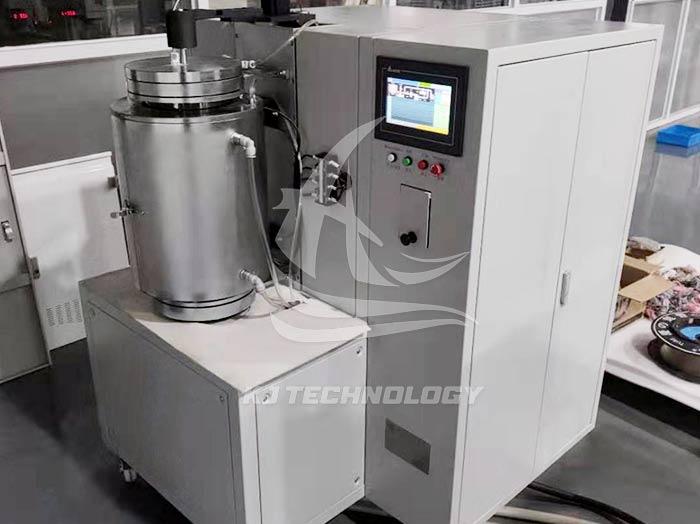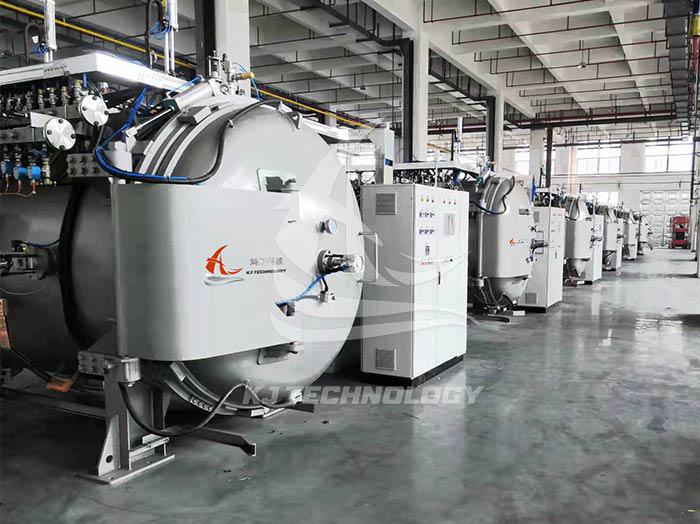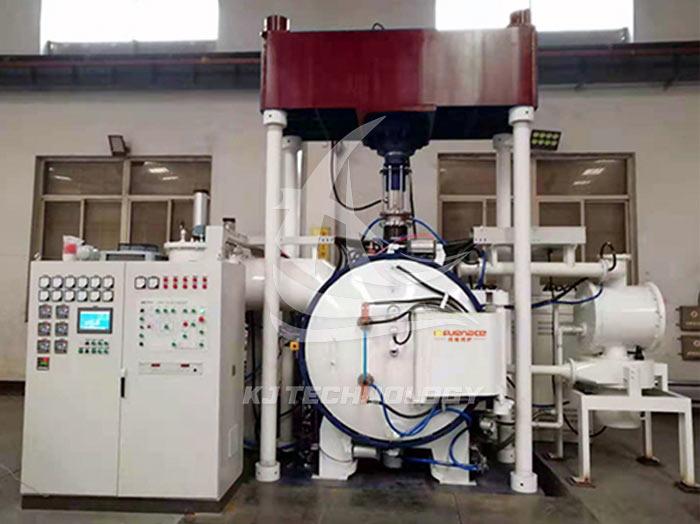What are the applications of high vacuum hot press furnaces in the ceramic industry?
 07-18-2025 Author: KJ technology
07-18-2025 Author: KJ technology
The application of high vacuum hot pressing furnace in the ceramic industry is extensive and critical. Through the synergistic effect of vacuum environment, high temperature and pressure, it significantly improves the performance and preparation efficiency of ceramic materials. The specific applications and advantages are as follows:
1. Core application areas
Densification and sintering of advanced structural ceramics
Boron carbide (B ₄ C) ceramics: Boron carbide, due to its high proportion of covalent bonds, accounts for 93.94%. Atmospheric pressure sintering requires 2250-2300 ℃ and can only achieve a relative density of 80% -87%. The grains are prone to coarsening, resulting in residual pores. By hot pressing and sintering at 2150 ℃ for 10 minutes in a vacuum hot press furnace, the relative density can be increased to 91.6% while suppressing grain growth, resulting in high-performance materials with a room temperature Young's modulus of 292.5 GPa and Poisson's ratio of 0.16. These materials are suitable for extreme environments such as bulletproof armor and nuclear reactor control rods.
Silicon carbide (SiC) and silicon nitride (Si ∝ N ₄) ceramics: Hot pressing sintering can eliminate internal pores, improve bending strength to 800-1000MPa, and meet the high temperature and high strength requirements of aerospace turbine blades, bearings, and other materials. For example, a certain aviation company uses a vacuum hot pressing furnace to prepare silicon nitride ceramic substrates for electric vehicle power modules, which improves heat dissipation efficiency by 25%.
Precision preparation of functional ceramics
Transparent ceramics: Aluminum oxide (Al ₂ O3), aluminum nitride (AlN), etc. are sintered under vacuum to obtain materials with a light transmittance of>80% by eliminating impurities and pores. They are used in optical fields such as laser windows and high-pressure sodium lamp tubes.
Bioceramics: Hot pressed sintered bioactive ceramics such as hydroxyapatite (HA), combined with metal 3D printing technology, are used to prepare artificial joint and bone repair materials, which have both biocompatibility and mechanical strength.
Strengthening of Ceramic Matrix Composite Materials
Metal ceramic composites, such as titanium based titanium carbide (Ti TiC) composites, achieve metallurgical bonding between metal and ceramic interfaces through hot pressing, improving fatigue resistance by 40%. They are used as materials for rocket engine casings and nuclear reactor structures.
Fiber reinforced ceramics: Carbon fiber, ceramic fiber, and ceramic matrix are composite, and after hot pressing, the fibers are evenly distributed to improve the impact resistance and fracture toughness of the material, which is suitable for spacecraft thermal protection systems.
2. Analysis of Technical Advantages
Inhibit grain growth and optimize microstructure
The vacuum environment reduces the generation of impurity phases, and pressure promotes plastic flow and diffusion between particles, resulting in grain refinement to the nanometer level. For example, nano silicon carbide powder can be sintered under vacuum hot pressing, with grain size controlled between 50-100nm and hardness increased by 30%.
Reduce sintering temperature and shorten process cycle
Pressure assisted sintering reduces the temperature by 200-400 ℃, for example, the sintering temperature of boron carbide is reduced from 2300 ℃ to 2150 ℃, while the sintering time is shortened by 50%, reducing energy consumption and equipment loss.
Eliminate internal defects and improve material performance
The vacuum environment eliminates gases and volatile impurities, compresses particles under pressure, and achieves a ceramic density of over 99% with a porosity of less than 1%, significantly improving bending strength, fracture toughness, and corrosion resistance. For example, the fracture toughness of hot pressed silicon nitride ceramics reaches 8-10 MPa · m ¹/², which is 2-3 times that of atmospheric pressure sintering.
Realize complex shape forming and reduce post-processing
During the hot pressing process, the mold applies pressure to directly form shaped ceramic components such as turbine blades, bearing sleeves, etc., reducing machining steps and lowering production costs.
3. Typical application cases
aerospace field
A certain aerospace company uses a vacuum hot pressing furnace to prepare silicon carbide ceramic matrix composite materials (C/SiC) for rocket engine nozzles, which can withstand high temperatures above 3000 ℃, while reducing weight by 30% and improving payload capacity.
In the field of electronics industry
A certain electronics manufacturer uses a vacuum hot press furnace to prepare aluminum nitride ceramic substrates for 5G communication base stations, with a thermal conductivity of 180W/(m · K), meeting the high-frequency heat dissipation requirements.
Biomedical field
A certain medical device company prepares artificial joints by hot pressing hydroxyapatite/titanium alloy composite materials, which match the biological activity and mechanical properties of human bones, and shorten the postoperative healing time by 20%.








